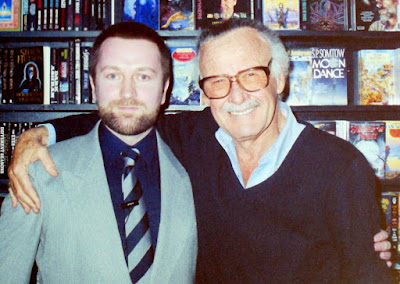Grahame stood in the doorway of his new bedroom on the first day of the flit and surveyed the interior without much enthusiasm. He'd not wanted to move from the house he'd known since the age of two to the freshly turned teenager he was now and hadn't been shy about letting his parents know how he felt. His mother had dismissed his reservations. "You'll like it when you get there," she'd said. "It's a much bigger room, with a cupboard, so you'll have plenty space to put all your stuff."
Grahame had been unimpressed at the prospect. He was a solitary child who preferred to have the familiar around him, and the forthcoming move had upped his anxiety to unprecedented levels. He liked where he lived - the house, his room, the neighbourhood, and was reluctant to relinquish it for the unknown. He had a commanding view over a playfield across the road and knew he'd miss climbing the trees and running over the patchy grass while pretending to be a superhero or explorer.
His new room was nearly twice the size of his former one and he felt dwarfed by its seeming vastness. The view was a disappointment, overlooking a parking area for neighbours' cars; grey, colourless, and uninspiring, he knew it was unlikely he'd ever get used to it. Anyway, with any luck he'd probably spend much of his time sleeping. He'd suddenly found himself feeling inordinately tired over the last few weeks, so perhaps he'd just avoid looking out of the window. Shame, because he loved doing that in his old room, watching to see who was playing in the field, or gazing at the birds hopping about in the branches of the trees that ran alongside it.
Why did things have to change? He resented change, resisted it, promised himself that he'd be a child forever, but knew from the way his body was developing he'd eventually have to bury that particular dream. His idea of paradise was for everything to stay as he knew it for eternity, with him being a perpetual schoolboy and his parents never growing old or dying. For things to stay as they are, where death and decay had no dominion, and 'change' was an unknown concept that held no sway.
It was with great reluctance that he snuggled between the sheets that first night, but he was tired. Perhaps he's wake up in the morning to find the flit had all been a bad dream, merely a psychological manifestation of his fear of change and losing the comfort of everything he held dear. He had a doctor's appointment in a couple of days to determine why he'd been so tired and fatigued of late, so that was yet another unwelcome intrusion he'd much rather do without. Sleep claimed him with unusual alacrity, and when his parents looked in on him later, they found the scene heart-warming, in the way only parents can.
The next morning, much to his mother and father's concern, Grahame couldn't be roused, so the family doctor was summoned, who pronounced the lad had passed away in his sleep. His parents were understandably devastated - he'd been their only child. A few weeks later they were informed of the results of the post-mortem. "Leukemia, I'm afraid," said the doctor. "There was nothing that could've been done, even had you brought him in months ago. Sometimes it just pops up out of nowhere and does its damage before we even know it's there. At least he's in a better place now."
The next morning, much to his mother and father's concern, Grahame couldn't be roused, so the family doctor was summoned, who pronounced the lad had passed away in his sleep. His parents were understandably devastated - he'd been their only child. A few weeks later they were informed of the results of the post-mortem. "Leukemia, I'm afraid," said the doctor. "There was nothing that could've been done, even had you brought him in months ago. Sometimes it just pops up out of nowhere and does its damage before we even know it's there. At least he's in a better place now."
Grahame's mother looked into her husband's tearful eyes as she replied to the doctor. "Yes, somehow I feel in my heart you're right. If I know Grahame, he's just where he wanted to be."
When Grahame awoke, he was surprised to find he was no longer in his new room, but his old one. What a relief! It had felt so real, but was obviously only the dream he'd hoped it was. It never even occurred to him to run next door to his mum and dad's room to express his joy at the discovery. Grahame would never think of his parents again, nor would he be perturbed to find himself the sole occupant of the house. In time, his parents would join him, but until then he'd be completely unaware of their absence. For now, it was enough to be in his old room in his former house, and that was all he really wanted or needed. He was happy.
















































.jpg)
.jpg)
.jpg)
.jpg)
.jpg)
.jpg)